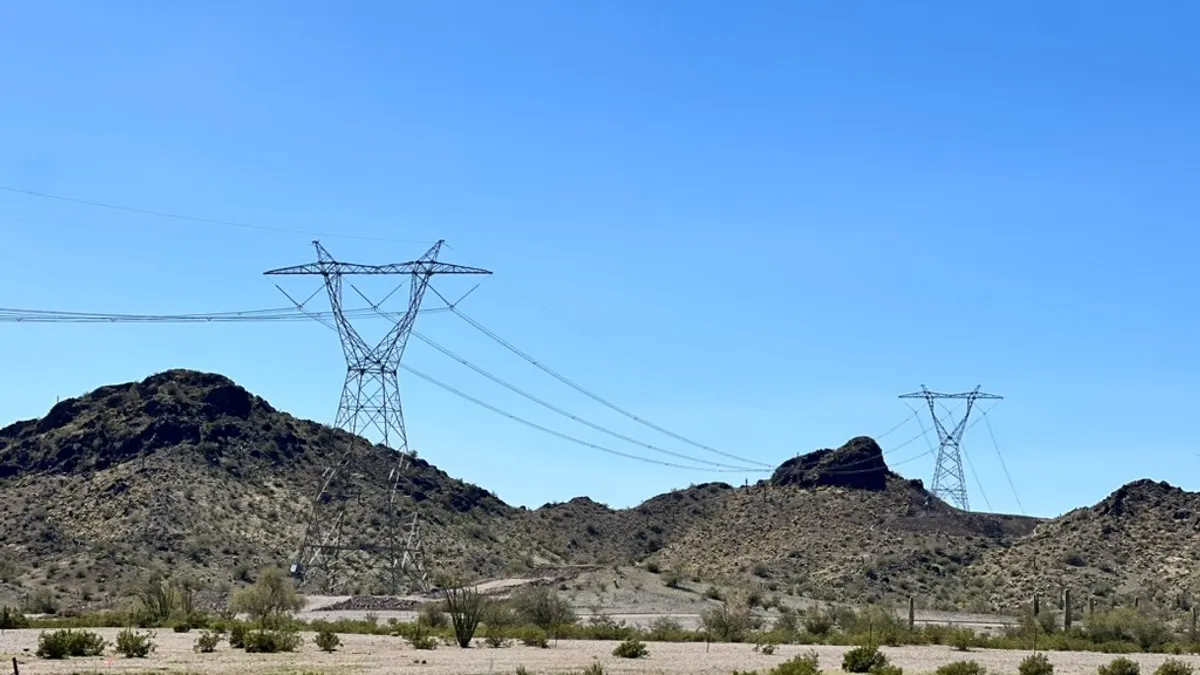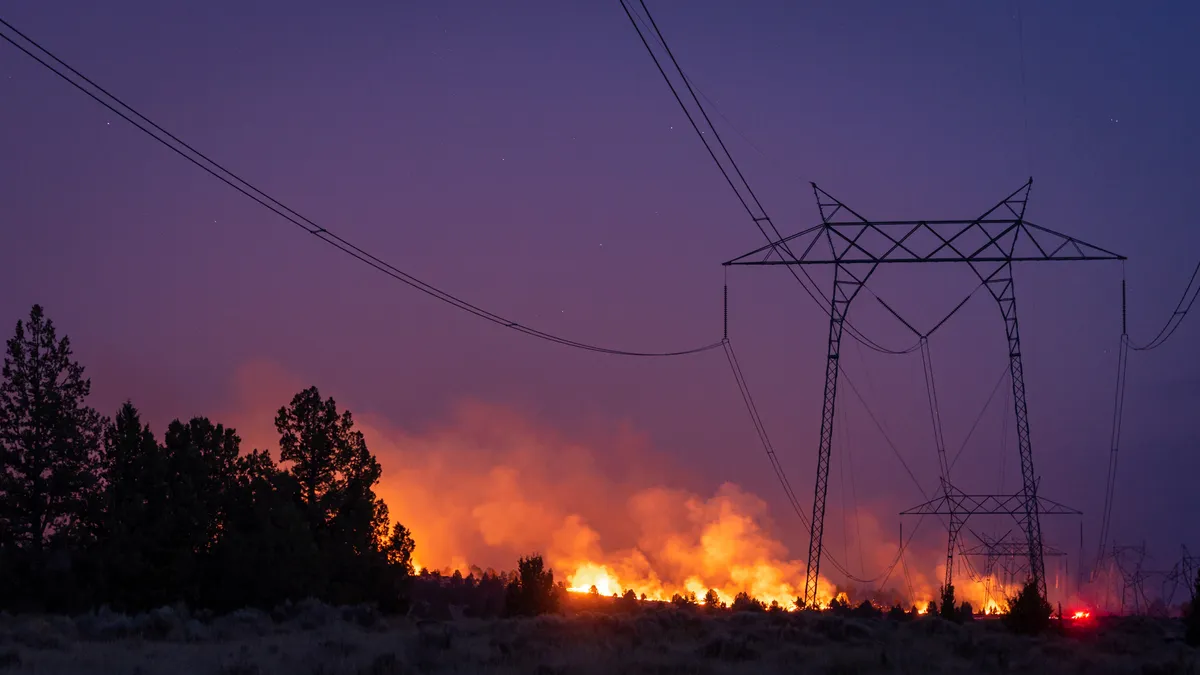It's a common quip in energy efficiency circles that the most cost-effective megawatt is a megawatt saved. But for utilities, the financial incentive often works the other way.
Power providers make money off the electricity they sell, so efficiency improvements can cut into company revenues if there's no regulatory mechanism to prevent it.
But such problems can be easily fixed with good policy, according to a new report for Texas regulators from the South-central Partnership for Energy Efficiency as a Resource, or SPEER.
“Utilities are in business to make money and the tendency to impose energy efficiency mandates on them fails to take into account that those mandates could impose losses and stranded costs,” said Steve Isser, co-author of the SPEER paper and president of the consultancy and analysis firm Energy Law and Economics.
Traditional ratemaking tends to give utilities incentives “to encourage their customers to increase consumption, rather than to reduce it,” the paper reports. Energy efficiency programs, however, reduce electricity demand and can have “adverse financial consequences for a utility.”
That makes utilities "less than enthusiastic about the [efficiency] mandates," Isser said.
What utilities need, the paper argues, are incentive mechanisms that make energy efficiency a "profit center," allowing for timely recovery of program costs, reducing risk of lost revenue, and providing ways for utilities to earn more money with better programs. Those lessons, SPEER analysts say, are especially applicable to the Lone Star State.
Making rates do the job
“Policymakers see energy efficiency as a good idea,” Isser said, but an efficiency mandate alone can be a financial burden. “The challenge is finding a way to get utilities to implement programs without reluctance.”
The answer may be in utility ratemaking practices, Isser said, outlining three tools regulators can use “to balance the public good done by reducing consumption with the harm done to utilities and their shareholders,” he added.
The first is separating, or “decoupling,” the utility’s electricity sales volume from its returns, as is now done in at least 22 states.
“You have to make sure the utilities don’t lose money by supporting energy efficiency,” Isser said.
The second is making sure the alternative rate mechanism provides for “timely” recovery of the utility’s costs through rates.
“Make sure they don’t have to wait years for a next rate case to recover their investment,” Isser said.
Finally, the utility should be able to improve its returns if it implements and manages the program better than an established standard.
“A utility should be rewarded for performance somewhat like a private sector market rewards a business,” Isser said. “If they do a better job, they are rewarded and if they do a worse job, they lose money.”
Separating power sales from revenue
To separate utility revenues from overall power consumption, regulators have a couple options, Isser said.
“Revenue regulation” accomplishes the decoupling by permitting a regulated utility rates that return its allowed revenue even if sales volumes fall. Simple decoupling is the cruder form because “the total revenue is decoupled from the kWh sold,” Isser said.
A program-specific lost revenue recovery mechanism can allow for recovery of revenue program by program but it is a more complicated calculation, he added.
“In a state with multiple mandated programs, decoupling might be better, especially if a state’s commission does not have a large staff that can keep track of the revenues associated with each individual program,” Isser said.
Equally crucial to the success of these rate design innovations is a mechanism, like a program “rider,” that allows for timely recovery of lost revenues, the paper reports.
Energy efficiency program administration, rebates, and incentives, impose costs on utilities and may be in place for five or ten years, Isser said. A rider allows the utility to be compensated out of rates yearly.
Through the rider, the utility is made whole without the complications of a rate case. Instead, the utility files an estimate at the beginning of the year or an accounting at the end of the year with the commission and assesses rate changes accordingly.
“Because the utility is reimbursed in a timely way, there is no disincentive to performance," Isser said.
While some components of consumer rates may go up, ratepayers’ costs go down as they become more efficient, he added. Because of efficiency, “they use less electricity, utility infrastructure spending goes down, and reduced demand drives the wholesale electricity price down.”
Performance-based incentives
On top of separating power sales from utility revenue, regulators can also add positive incentives for utility efficiency investments.
In “performance based ratemaking” (PBR), the utility is rewarded for meeting performance targets established through the regulatory process, but is penalized for falling short of them.
PBR has long been used with reliability metrics to give utilities general or very specific incentives to reduce the frequency and length of outages, Isser said.
Consolidated Edison’s Brooklyn-Queens Demand Management project demonstrated some general themes of how PBR can be used in another way, the paper reports.
When the utility decided to use distributed resources and efficiency to defer a $1.1 billion substation upgrade, New York regulators rewarded the utility with a higher rate of return for the project.
As with the Brooklyn project, regulators should “reward the utility with a share of the savings" when the utility can increase efficiency, Isser said.
If the utility chooses to subcontract to private sector vendors, PBR motivates it to administer more efficiently and find the most cost-effective third party providers, he added.
“Decoupling removes disincentives. PBR provides incentives. Decoupling says the utility will not be penalized for doing what it is asked to do. PBR says the utility will be rewarded for doing better than it is asked to do,” Isser said.
The Texas situation
Despite well-designed rebate and incentive programs, “Texans have forgotten that energy efficiency is a cost effective investment,” said SPEER CEO Robert King.
King commissioned the this SPEER study after the Texas legislature passed Senate Bill 774 in the 2015 session. The bill requires a broad study of rates by the commission, including “cost savings, if any, realized by all parties by utilizing periodic rate adjustment as opposed to ratemaking proceedings.”
It also directs the commission "to study how utilities in other states recover their revenues,” King said. “This paper gives legislators a good sense of their options for Energy Efficiency and I want it to be part of the conversation that goes back to the legislature in January.”
After utility disaggregation, only the transmission and distribution (T&D) utilities in Texas are still regulated, he said. "They see market changes that make it feel it is riskier to be in the power distribution business,” King added.
They are now smaller, their cash flow is smaller, and it is harder to go years without rate increases. “We want the utilities to do well,” King said. “But we also want them to help customers do well through energy saving measures.”
An alternative rate design that is not in the paper but which might serve Texas and other disaggregated states effectively is a capacity charge, King said. Instead of basing cost recovery a per kWh charge, a capacity charge would be based on the total peak load. “It doesn’t matter what the energy throughput is,” he explained.
Properly designed incentives would be a driver to shift demand and lower the peak load. “Retailers like NRG and Reliant and Green Mountain would get that higher demand charge and they would then have an incentive to get their customers to lower their peak usage,” he said.
Toward the utility of the future
The state programs most relevant to Texas are the decoupling programs in Oregon and Idaho, according to Stratus Energy Consultant and paper co-author Jess Totten. Both remove disincentives by allowing for timely recovery of lost revenue.
Texas has an annually adjusted mechanism for recovering efficiency program costs, but not for recovering lost revenue like the Oregon and Idaho structures, Totten said. “That is the need in Texas right now.”
While originally designed for small, regulated states, the Oregon and Idaho decoupling plans are applicable to Texas, he said. It's not the size of the program that matters, according to Totten, but how it goes about making the utility whole for revenue losses.
“Because Texans tend to have a skeptical view about California, the report did not consider that state's longstanding and very successful decoupling program,” he said, somewhat tongue-in-cheek.
In the end, Isser said, “the utility of the future is going to be more of a service provider, providing reliability, providing technical help, providing efficiency, and coordinating distributed generation with wholesale power.”
Regulators and policymakers must begin to think about "what they want the utility to do, how to pay for it, how to design incentives to get utilities to do it right, and how to design rates so utilities see policy goals as opportunities instead of burdens,” he added.






















